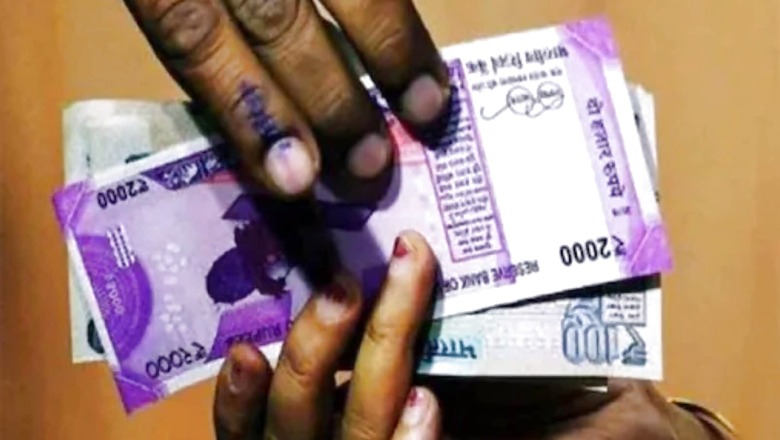
views
Indian economy has clocked a record double-digit growth in the June quarter. India’s gross domestic product (GDP) grew 20.1 per cent in the first quarter of FY22. However, it must be noted that this record growth was in comparison against the April-June quarter of 2020 when the economy contracted 24.4 per cent.
India’s GDP in April-June quarter was in line with the predictions by the analysts and rating agencies. As many as 41 economists by Reuters said that India’s GDP was expected to rise 20 percent in April-June 2021. Reserve Bank of India earlier predicted that India’s GDP would grow by 21.4 per cent. “The GDP growth for Q1 22 at 20.10 per cent is well in line with the estimates, and it gives comfort that the economic revival process is intact. But the recovery is not that strong considering the fact that the contraction was deeper,” said Joseph Thomas, Head of Research – Emkay Wealth Management.
India’s GDP at constant prices was estimated at Rs 32.38 lakh crore in the quarter under review, as against Rs 26.95 lakh crore in Q1 of 2020-21. The real gross value added for Q1 rose by 18.8 per cent, according to the data released by the National Statistical Office (NSO) on August 31.
“The number is a historic high because of the low base effect and masks the impact of the second wave in the quarter. When compared to FY 2019-20, GDP growth contracted by over 9%. The pandemic impact on consumption and investment is high as expected,” said Rumki Majumdar, economist, Deloitte India.
The construction sector posted a record growth of 68.3 per cent in Q1FY22 against 45 per cent in the year-ago period. This sector suffered the most as the construction activity came to a halt during the first wave of the pandemic. On a similar note, manufacturing also bounced back to 49.6 per cent in the June quarter, against 36 per cent in April-June quarter.
Trade, Hotels, Transport, Communication & Services related to Broadcasting, grew by 34.3 per cent in Q1FY22 while agriculture grew by 4.5 per cent. However, hotels, hospitality and tourism continued to be affected by the Covid-19 pandemic.
“From expenditure approach, private consumption grew faster than expected, while investments were broadly in line. Within investments, while household and states’ capex growth weakened last quarter, corporate and center’s capex grew faster,” Nikhil Gupta, chief economist, Motilal Oswal Financial Services.
“GDP for Q1 has been accurately close to our lower end of the baseline projections published in June. This suggests that our relatively modest baseline assumptions are holding true. If the recovery path is close to what we predicted, India will see a growth of 9 per cent this fiscal year,” Majumdar added.
“While the private, as well as government consumption numbers, remain more or less at the same levels as before with no significant changes as such, the need to give further push to consumption cannot be overemphasized. The policy accompaniment by both the central bank and the government needs to be continued especially in the light of relatively higher price level, and no pick up in credit growth,” Thomas added.
Read all the Latest News, Breaking News and Assembly Elections Live Updates here.




















Comments
0 comment